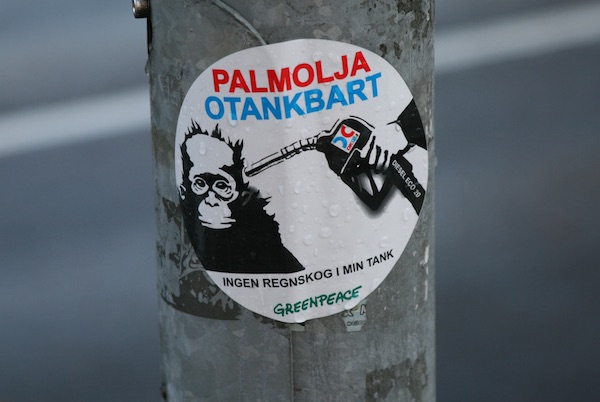I am a sugar junkie. I am addicted to the stuff.
I would love to be that person who can have one or two cookies and then confidently put the box away.
I struggle with this. The same goes for ice cream sandwiches. One or two is acceptable. Seven is not. A single slice of pie—not the entire tray. A bowl of cereal—not the whole box.
I envy the person who can civilly spread peanut butter onto their crackers and not attack the jar with a spoon; that person who can have a single granola bar, not the complete pack of twelve. You know that Lay’s chips advert—Betcha can’t have just one?—story of my life.
I recognize my serious addiction to consuming large amounts of deliciously, chemically saturated, processed food. I truly do, and I am trying to practice more mindful eating habits.
However, besides paving my path toward diabetes, cardiac disease, and other various health implications, there is another downside I would like to bring light to with my mindless eating habits.
It’s a type of edible vegetable oil that comes from the palm fruit.
Because of the high oil yield of the trees, it is the most popular and prevalent oil used in packaged and processed foods. Think snack foods—cookies, crackers, popcorn. Many manufacturers also use a mix of oils in their products. For instance, it’s typical now for crackers to contain a little palm oil as well as soybean, canola, or cottonseed oil.
What’s more, this single vegetable oil is also found in over 50 percent of all consumer goods. Think household products—everything from cleaning supplies, shampoo, cosmetics, detergents, and toothpaste.
We can’t seem to get enough of the stuff. Palm oil imports to the U.S. have jumped 485 percent in the last decade. Last year we imported about three billion pounds. That’s about 400 million gallons—enough to fill more than 600 Olympic swimming pools.
Today, 85 percent of palm oil is globally produced and exported from Indonesia and Malaysia—but sadly, most of the time, not using sustainable measures.
One of the biggest impacts the palm oil industry is having is that it’s wiping out our forests. According to the World Wildlife Fund, an area the equivalent size of 300 football fields of rainforest is cleared each hour to make way for palm oil production.
This large-scale palm oil expansion is happening at the expense of biodiversity and ecosystems in the countries where it is produced. Currently, a third of all mammal species in Indonesia are considered to be critically endangered because of this unsustainable development that is rapidly encroaching on their habitat. It’s estimated that if nothing changes, species like the orangutan could become extinct in the wild within the next five years, and the Sumatran tigers in less than three.
Deforestation for palm oil production also contributes significantly to climate change. The amount of smoke being produced from burning the remaining forest undergrowth is what’s making Indonesia the third highest greenhouse gas emitter in the world.
Sadly, it’s not only the environment and the animal species that are suffering. The palm oil industry has been linked to major human rights violations, including child labour in remote areas of Indonesia, and the use of illegal immigrants in Malaysia.
As land and forests have to be cleared for the development of the palm plantations, the industry has often been associated with indigenous rights abuse in the countries where it’s produced. In many cases, the government’s main interest in the economy and their own financial benefit, leads them to allow corporations to take the land owned by the indigenous people without their consent.
Upon learning all these facts, it was disheartening to realize that I have inadvertently been supporting this process.
Though the use of palm oil is so common in consumer goods, there are still many things we can do when it comes to practicing mindful consumption:
1. Check labels. The next time you go out to buy shampoo or cleaning supplies, check the label to see what’s actually in it. You can find out which types of product contain it here—you would be surprised at how common it is.
It’s important to note that palm oil can be hidden in over 200 different names. This guide contains the most common ingredient names that palm oil can be labeled under, including vegetable oil, glyceryl, and sodium lauryl sulphate.
A general rule of thumb on labels—the longer the list of ingredients, the more reason to stay away. This goes for food too. The simpler, the better. The healthiest foods, fruits and vegetables have no label or packaging. Mother nature did the job for us.
2. Do a Google search and find easy, environmentally friendly recipes to make your own home cleaning agents, cosmetics, or baked goods. Then you’ll know exactly what’s going in to it.
3. Look for the RSPO or Green Palm label to ensure you purchase products made with certified sustainable palm oil. This label gives you the confidence that the palm oil was produced in a socially and environmentally responsible way.
4. Avoid companies which are known for having palm oil in their products. At least do the label check before buying a specific product.
5. Spread the word. Many people are simply unaware of the wider implications the palm oil industry is having, and how widespread the oil is in consumer goods.
One need not be a serious sugar junkie or even occasional snack indulger, to have unconsciously contributed to the harmful effects of the palm oil industry.
Chances are, if you are not consuming it, you are likely using it in your household in some way.
So the next time we grab that muffin from Starbucks, wash our dishes with detergent, or shampoo our hair, let’s take a moment to reflect on the impact our actions are having—on the environment, on other species, and on the planet.
Take one step at a time. Becoming a more mindful consumer is the first.
A quote that may help to remind you when you mindlessly reach for that pack of cookies is, “Don’t ask why healthy food is so expensive, ask why junk food is so cheap.”
Food for thought.
~
~
~
Author: Michelle Amanda Jung
Image: Mathias/KlangFlickr/Mathias Klang
Editor: Lieselle Davidson











Read 0 comments and reply